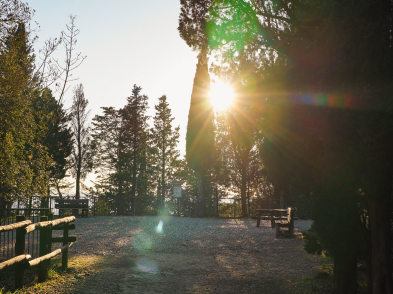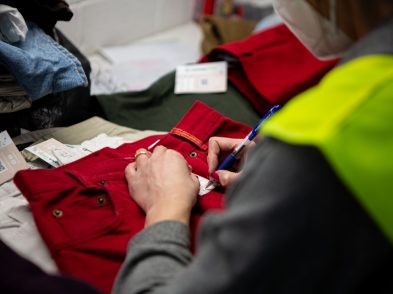The
unprecedented heavy rains that fell in Tuscany in November 2012 caused almost
50 million euro in damage, leaving families without homes and decimating
hundreds of hectares of agricultural land. TF looks at the aftermath of the
disaster, and what is being done to prevent further tragedies.
Perhaps
one of the most defining features of the Maremma is its landscape. The vast
area of southwestern Tuscany is predominantly agricultural, except where there
are uncultivated hills, woods or beaches. I go there almost every weekend, and
feel it is mine in that way that we tend to adopt and feel possessive of places
we love. On a recent trip, I noticed deep crevices in the hillside that were
not there before. It was like the land had aged and wrinkled overnight. I set
out to find out what had caused this damage to la mia Maremma… Maremma, mia!
I
witnessed this in early December 2012, when I traveled to the town of Manciano
for a conference called La Maremma delle Idee, a two-day event presenting ideas
on themes of tourism, technology and environment. Manciano is located just
inland from Orbetello, and to get there you pass through Albinia, a coastal
town that was completely underwater after the heavy rainfall of November 10 to
13, 2012, when the Albegna river overflowed. The main road, its stores and the
residential buildings that line it have been power-washed clean. On the
surface, the town does not look that different than it did the month before.
However,
it is when you get out of Albinia and see the previously fertile farmlands and
hillsides that you realize something has profoundly changed. A pile of
mud-covered, discarded pieces of furniture, appliances and personal belongings
outside of a farmhouse betrays the personal tragedy of its dwellers; a field
whose land is so impregnated with water that it seems it will never dry out; a
car moored somewhere in its midst; and hills with these crevices, half a meter
wide, 25cm deep, that can’t possibly be anything good.
At
the conference in Manciano, an agronomist named Roberto Barocci spoke about
this very issue. The crevices are called rills and they are a kind of extreme
soil erosion that formed because of the exceptional amount of rain that fell;
since it had no other paths to follow, it headed straight down the hill. The
water cuts through the topsoil, bringing an incalculable quantity of earth with
it; this mix flows down to the riverbank, raising its levels and contributing
to its inability to contain water. Where you see these rills, there is no
organic substance left. This is dead land.
While
I witnessed this phenomenon in the province of Grosseto, this winter’s rains
have caused the same problem in neighbouring areas, too. Barocci maintains that
two things could have been done to avoid it. First, the evolution of
agriculture in the past few decades has seen fewer animals at pasture, which
naturally enriches the soil with humus, a substance that absorbs 20 times its
own weight in water and minerals. Humus-rich soil holds water and earth on a
hill better than soil weakened by modern farming practices. A return to the use
of humus is something that can be done on a local level without particular
investment.
The
second prevention factor is much more difficult to implement: a law passed in
1989 (specifically, Legge 18 Maggio 1989, n. 183: Norme per il riassetto
organizzativo e funzionale della difesa del suolo) sets a series of hydraulic
planning guidelines that suggest the creation of detention basins in areas with
rivers at risk of flooding. These are essentially floodable fields to which
water is diverted in case of imminent overflow. Despite this being one of the
best known, most sustainable solutions in flood prevention, few basins have
actually been built in Italy, though information dating back to 2009, available
on the Tuscan Region’s website, indicates that 168 such projects are underway.
On
January 17, 2013, Tuscany signed an agreement with the national government that
will provide co-financing for a pilot program in hydraulic risk prevention to
the tune of 600 million euro. This amount comes in addition to the funds
allocated in November 2012 for the emergency clean-up effort (14 million euro)
and urgent maintenance (100 million euro) interventions. The work to be done
ranges from cleaning up riverbanks to securing bridges (a more specific list is
not publicly available at the moment).
The infographic below helps understand the magnitude of flooding and its economic consequences:

But,
will this investment keep us safe from future flooding? I asked Andrea
Giacomelli, an engineer with a PhD in hydrology who now works as an
environmental awareness activist, what we could do to avoid disasters. He says
‘not much,’ as long as we blindly rely on data and predictions. He then showed
me something called an intensity-duration frequency curve, a statistical tool
that determines the size of a ‘rainfall event’ (or simply put, how much it
rains in one storm) that statistically occurs every 10, 20, 50 or 200 years.
These curves are used when calculating things like the height of a levee or the
capacity of storm sewers, which are made to resist reasonable recurrences.
Sometimes, you get an unpredictable amount of rain, which is what happened last
November. It rained 170 percent more than the 200-year return period (or record
rainfall) in the Grosseto region. At these levels, there is almost nothing you
can do except pull out your wellies.
But
Giacomelli is a believer in mixing scientific data with human knowledge. If
called in to consult in an area, he speaks with local farmers, the people who
have closest contact with the land, because from them he can gather the kind of
intimate, non data-based knowledge that is accumulated over generations of
experience. On the other hand, sometimes large government-sponsored projects
are carried out in contrast with local logic. An example is the re-planing of a
riverbank of the Albegna, not far from Manciano. Local journalist and activist
Andrea Marciani published an article in March 2012 (http://tinyurl.com/c7ekhhk), which points
out that this ‘maintenance work’ ripped out trees, roots and other vegetation
essential to keeping water in its place. As one reader commented: ‘Even rocks
know that trees and vegetation are a natural barrier to erosion and the flow of
water!’ Unfortunately, the recent river clean-up was just upstream from a
bridge that tragically collapsed in the November floods, taking the lives of
three people.
The
problem is, of course, a very big one, and most solutions are out of our reach
as common citizens. Unusual natural events combined with modern migration
towards cities-a phenomenon more recent in Maremma than in other places-has
caused a lack of connection to the land.
Giacomelli’s
organization, Pibinko.org, holds music and environmental events in the area,
hoping that the presence of entertainment and communication outlets might
encourage people to stay, or to move back as he has. ‘Solutions will be found
with those who live in the territory, working with them to find out their
priorities and expectations, and using their local knowledge,’ he says. Local
knowledge that needs to be combined with global priorities and scientific
understanding in an attempt to limit damage caused by inevitable elements.
Feeling
small and insignificant in the face of these problems that are damaging ‘my
Maremma,’ I asked Giacomelli if there was anything that we, common citizens,
could do. He told me three little things anyone can do to raise their personal
level of awareness about hydraulic risk issues and safety (see graphic below).








